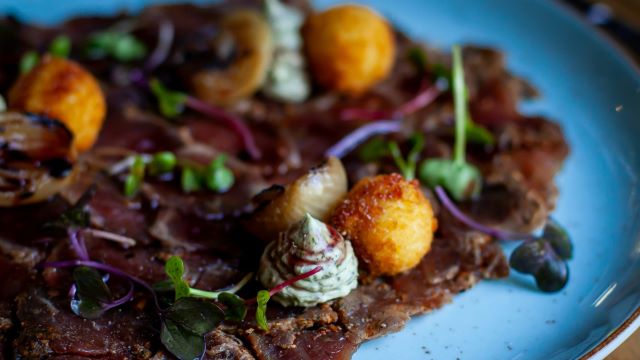In Botswana’s bustling markets, the scent of spice and sun-dried meat hangs in the air. Tied in neat bundles or sliced into rich, dark strips, biltong is more than a snack—it is a marker of heritage, a link to centuries-old preservation techniques that have shaped the region’s culinary identity.
Though its origins lie across the border in South Africa, biltong has taken firm root in Botswana, finding a place at roadside stalls, family gatherings, and festive celebrations. Prepared from beef or game such as kudu and springbok, the meat reflects the land’s abundant wildlife and deep connection to natural resources.
A Method Honed Over Generations
The making of biltong remains a craft that balances precision with patience. Quality cuts are chosen, then rubbed with a seasoning blend—salt, black pepper, and coriander forming the traditional base, with vinegar or sugar added in some variations. This mixture serves not only to flavor but to preserve.
Once seasoned, the strips are hung to air-dry for several days in well-ventilated spaces. Unlike jerky, which is typically cooked, biltong’s slow drying develops a complex texture: firm yet yielding, with a concentrated, umami-rich flavor that speaks to the care taken in its preparation.
From Snack to Ingredient
Biltong’s uses extend well beyond casual nibbling. It appears crumbled into salads, stirred into soups for a smoky depth, or scattered atop pizzas and sandwiches for a distinctive bite. In every form, it delivers a robust taste anchored in its careful seasoning and natural drying process.
Nutrition and Endurance
With its high protein content and minimal carbohydrates, biltong appeals as both a flavorful indulgence and a functional food. Its concentration of iron and zinc adds to its appeal, and its long shelf life has made it a reliable staple in both rural and urban households.
A Growing Global Footprint
What began as a regional tradition has steadily gained global attention. Specialty food shops in Europe and North America now stock vacuum-sealed packs, while online retailers offer artisan-made varieties to an expanding audience. For many consumers abroad, it is an entry point into Southern African flavors, appreciated for both its taste and cultural resonance.
An Enduring Symbol
In Botswana, biltong’s enduring popularity lies in its ability to bridge past and present—rooted in traditional methods yet adaptable to contemporary tastes. Whether sold by a street vendor on a dusty roadside or served in a chic urban café, it remains a flavorful reminder of the country’s culinary lineage.
Sources
- Morton, F. (2013). Cooking in Botswana: A History of Food and Drink. University of Botswana Press.
- van Wyk, B. (2020). “Traditional Meat Preservation in Southern Africa.” Journal of African Food Heritage, vol. 12, no. 3.
- Food and Agriculture Organization of the United Nations. (2019). Meat Processing Technology in Africa.


